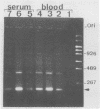Abstract
DNAs prepared from chagasic patients' sera were amplified by the polymerase chain reaction using oligonucleotide primers which anneal specifically to a highly repetitive sequence of Trypanosoma cruzi nuclear DNA. Samples from both acutely and chronically infected patients yielded positive results by this method. No significant difference was observed when either whole blood or serum samples of the patients were used. These results indicate that serum instead of whole-blood samples could be used for polymerase chain reaction-based detection of T. cruzi in field studies without the need of applying any special chemical treatment to the specimens. This would represent a considerable advantage due to the easier handling and transportation of serum as compared with whole-blood samples, especially in tropical climates.
Full text
PDF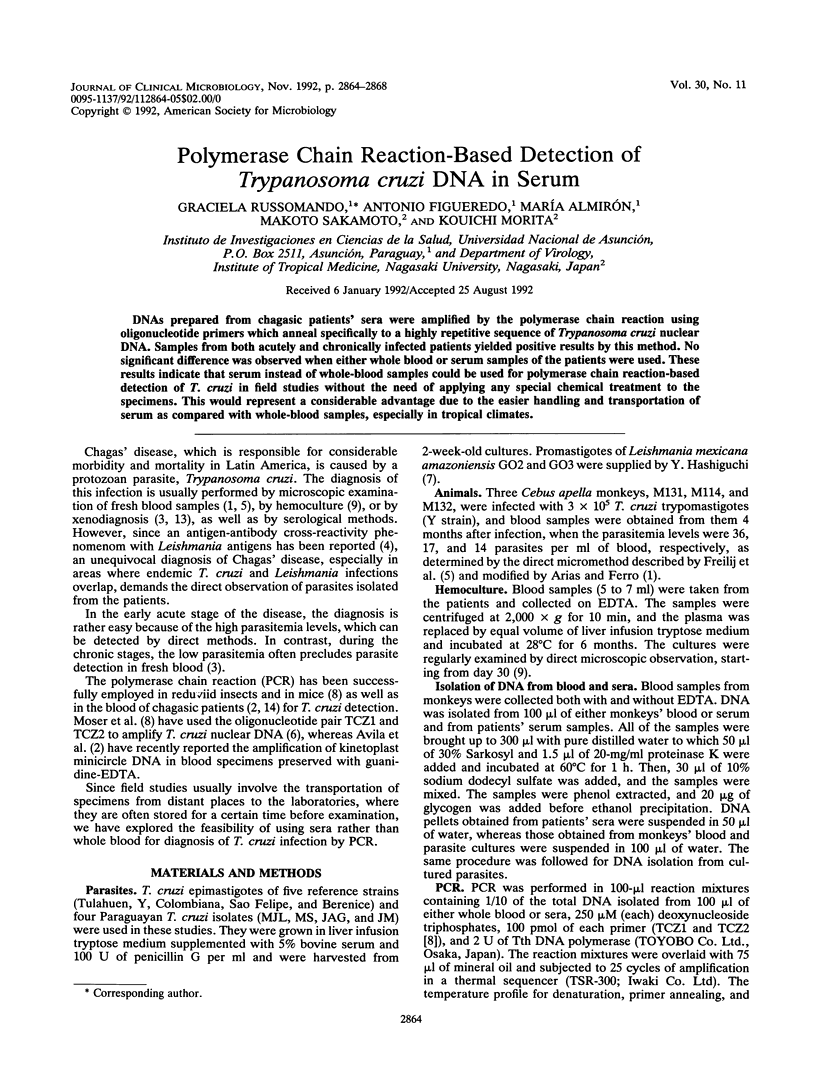
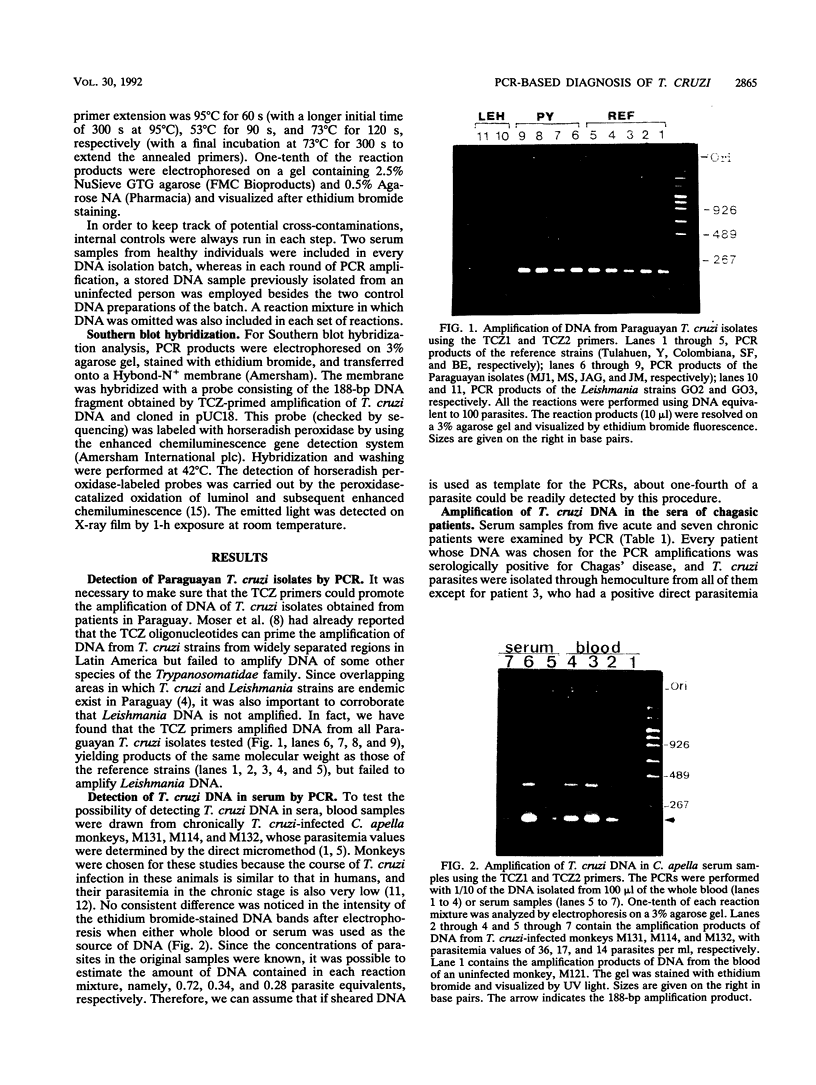
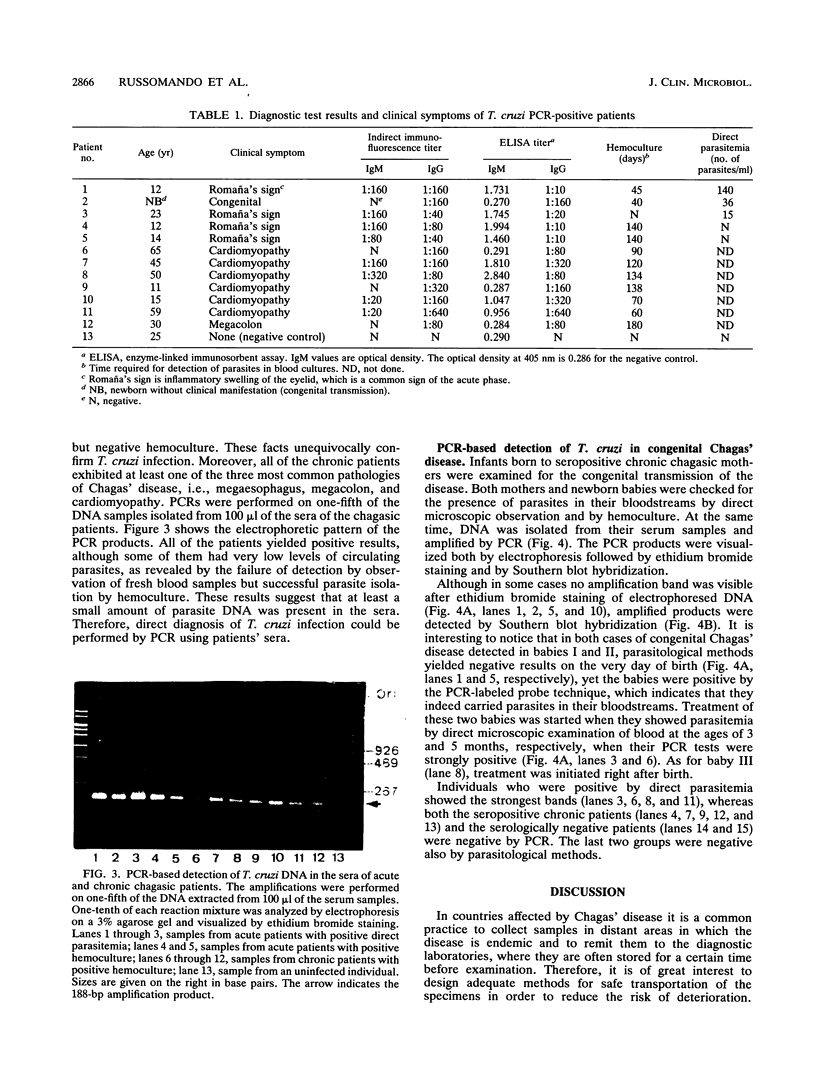
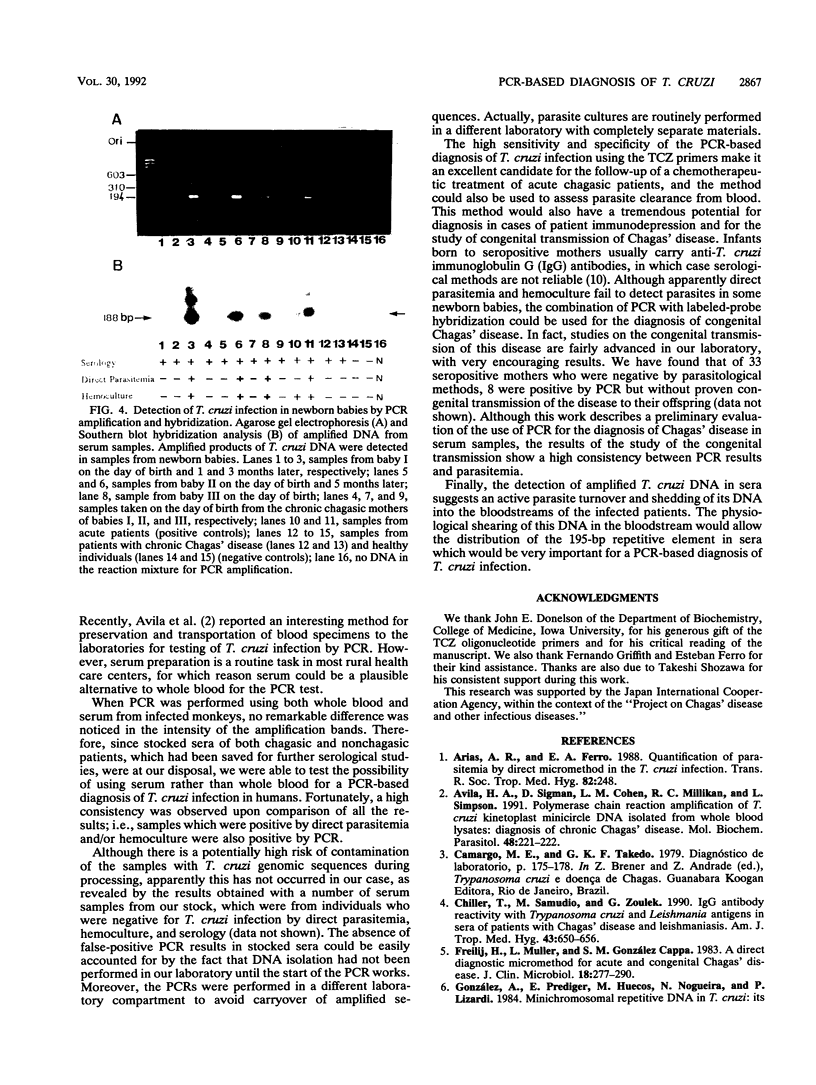
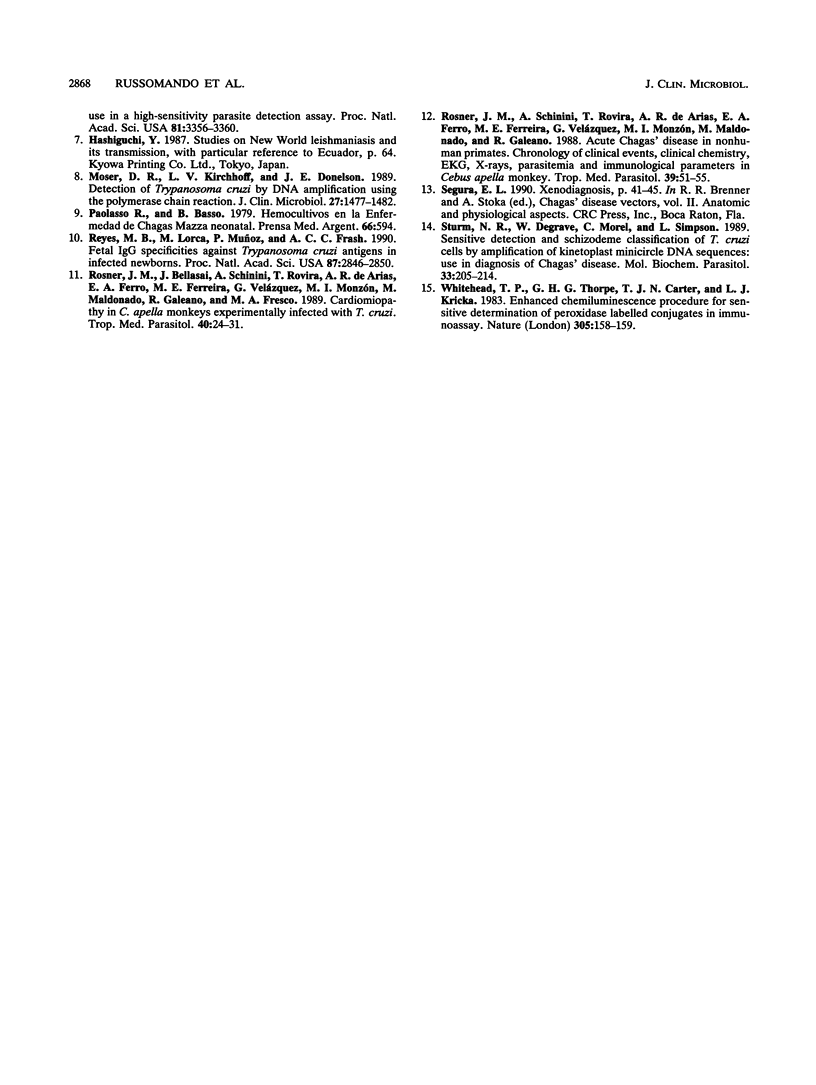
Images in this article
Selected References
These references are in PubMed. This may not be the complete list of references from this article.
- Avila H. A., Sigman D. S., Cohen L. M., Millikan R. C., Simpson L. Polymerase chain reaction amplification of Trypanosoma cruzi kinetoplast minicircle DNA isolated from whole blood lysates: diagnosis of chronic Chagas' disease. Mol Biochem Parasitol. 1991 Oct;48(2):211–221. doi: 10.1016/0166-6851(91)90116-n. [DOI] [PubMed] [Google Scholar]
- Chiller T. M., Samudio M. A., Zoulek G. IgG antibody reactivity with Trypanosoma cruzi and Leishmania antigens in sera of patients with Chagas' disease and leishmaniasis. Am J Trop Med Hyg. 1990 Dec;43(6):650–656. doi: 10.4269/ajtmh.1990.43.650. [DOI] [PubMed] [Google Scholar]
- Moser D. R., Kirchhoff L. V., Donelson J. E. Detection of Trypanosoma cruzi by DNA amplification using the polymerase chain reaction. J Clin Microbiol. 1989 Jul;27(7):1477–1482. doi: 10.1128/jcm.27.7.1477-1482.1989. [DOI] [PMC free article] [PubMed] [Google Scholar]
- Reyes M. B., Lorca M., Muñoz P., Frasch A. C. Fetal IgG specificities against Trypanosoma cruzi antigens in infected newborns. Proc Natl Acad Sci U S A. 1990 Apr;87(7):2846–2850. doi: 10.1073/pnas.87.7.2846. [DOI] [PMC free article] [PubMed] [Google Scholar]
- Rosner I. M., Bellasai J., Schinini A., Rovira T., de Arias A. R., Ferro E. A., Ferreira E., Velazquez G., Monzón M. I., Maldonado M. Cardiomyopathy in Cebus apella monkeys experimentally infected with Trypanosoma cruzi. Trop Med Parasitol. 1989 Mar;40(1):24–31. [PubMed] [Google Scholar]
- Rosner J. M., Schinini A., Rovira T., de Arias A., Velásquez G., Idalia Monzón M., Maldonado M., Ferro E. A., Galeano R. Acute Chagas' disease in non-human primates. 1. Chronology of clinical events, clinical chemistry, ECG, radiology, parasitemia, and immunological parameters in the Cebus apella monkey. Trop Med Parasitol. 1988 Mar;39(1):51–55. [PubMed] [Google Scholar]
- Sturm N. R., Degrave W., Morel C., Simpson L. Sensitive detection and schizodeme classification of Trypanosoma cruzi cells by amplification of kinetoplast minicircle DNA sequences: use in diagnosis of Chagas' disease. Mol Biochem Parasitol. 1989 Mar 15;33(3):205–214. doi: 10.1016/0166-6851(89)90082-0. [DOI] [PubMed] [Google Scholar]
- de Arias A. R., Ferro E. A. Quantification of Trypanosoma cruzi parasitaemia by direct micromethod. Trans R Soc Trop Med Hyg. 1988;82(2):248–248. doi: 10.1016/0035-9203(88)90435-x. [DOI] [PubMed] [Google Scholar]




